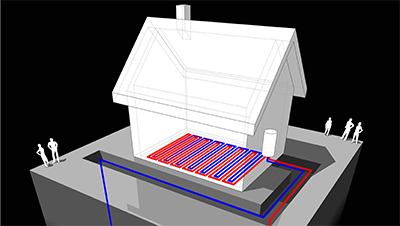Emissions from geothermal power plants are significantly lower than those from fossil fuel and hydrocarbon powered plants. However, tapping into a geothermal field pushes natural gas concentrations from the field to the power plant and the production of geothermal fluid causes the geothermal reservoir to degas and natural gas emissions may even be reduced with time.
Non-condensable gases are also produced from geothermal fields. Hydrogen sulfide, sulfur dioxide, nitrous oxide, methane, ammonia, argon and carbon dioxide, while in small concentrations, must still be removed from the steam and consideration is given when designing turbines, condensers, abatement and gas removal systems to reduce their transfer from the field to plant and production. Because binary power plants are closed-loop systems, they retain non-condensable gases and geothermal brine is utilized for electricity production. As a result, the retained gasses and fluid are re-injected into the reservoir, so negligible emissions are released in the atmosphere.
Flash and dry steam plants separate non-condensable gases from the steam in a condenser where they are released in the atmosphere or removed via an abatement system. The geochemistry unique to the resource significantly impacts the type and abundance of emissions as well as the type and design of the power plant, which further influences anthropogenic emissions. Of all the gases mentioned previously, carbon dioxide is most frequently produced from geothermal power plants.
While the carbon footprint of geothermal power plants is significantly much less than those of hydrocarbon power plants, did you know that there are concerns about the amount of natural and anthropogenic emissions associated with geothermal extraction and electricity production? Find out more in future #GeothermalFactsandStats posts, and follow us on all the major social platforms.
Author: Elizabeth Bullock
Photo: Hellisheidi-2: Lydur Skulason – https://www.flickr.com/photos/lydur/43773266915/in/pool-thinkgeoenergy/



